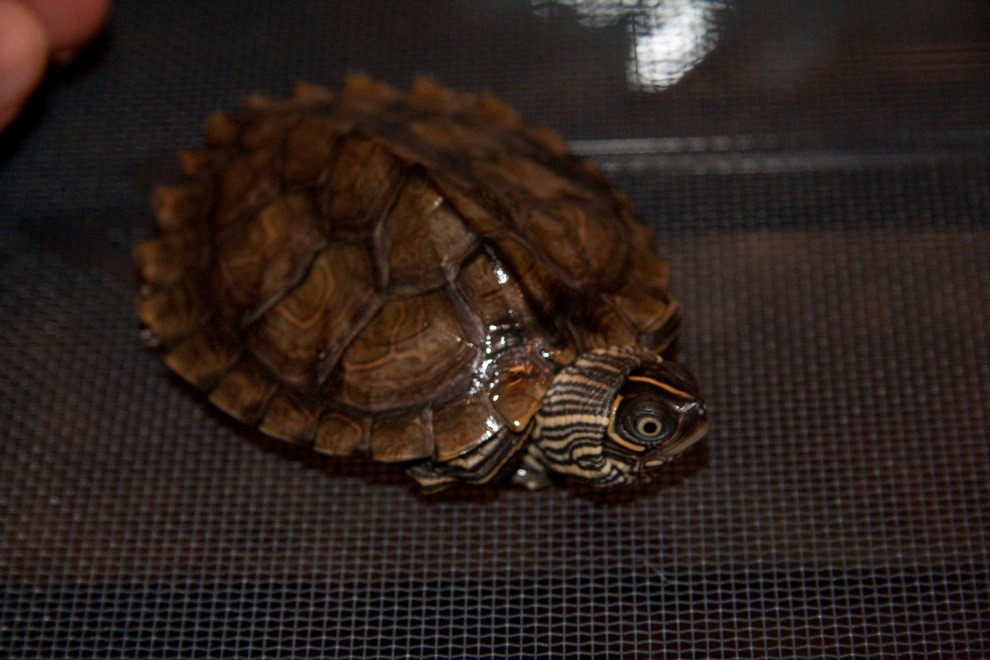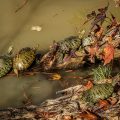Map turtles have a specialized body form: an overturned, serrated carapace, and hefty, broad forelimbs, and paddle-like hind feet. Map turtles are highly evolved and distinctively adapted, resulting in specific requirements that need to be met whether they are in natural environments or captive habitats.
All map turtles have different patterns on their shells. Mississippi map turtles are so named because of the prominent map pattern that can be seen on their shell. Mississippi maps are the most striking of all aquatic turtles. Here is a further description of some of distinctive body parts of a Mississippi map turtle that you need to know:
Head – To easily identify a Mississippi map turtle, look at its head. You can tell a Mississippi map turtle apart from other map turtles by the striking yellow reverse-crescents that you can see under its eyes. The curved lines start from the uppermost part of the Mississippi map turtles head and runs along to the center, cleaving down at each side. Another distinctive feature that a Mississippi map turtle has is its solid round pupil and bright-colored eyes. They usually don’t have any bars across their irises.
Carapace – (top of the shell). This is one of distinguishing features of a map turtle. The carapace is the elevation of black-tipped bumps that run along the turtle’s spine, and the rough, pointy rear exterior edge. Mississippi maps have moderately prominent black-tipped protrusions. The color of the Mississippi map turtle’s shells are either brown or olive with a combination of thin yellow circles or lines. The patterns on its shell often fade as the turtle matures or can be concealed by an overgrowth of algae on the shell.
Plastron – (bottom of the shell). The Mississippi maps lower shell, called plastron, is either light green in color with a mix of yellow or yellowish tan, and has light brown lines that look a lot like wood grain. These light lines run along the seams of the turtle’s scales. The map turtle’s plastron may also have dark patterns. These patterns can also fade over time.






 Author and long-time animal lover. Sharing knowledge on pet care through experience and the written word.
Author and long-time animal lover. Sharing knowledge on pet care through experience and the written word.